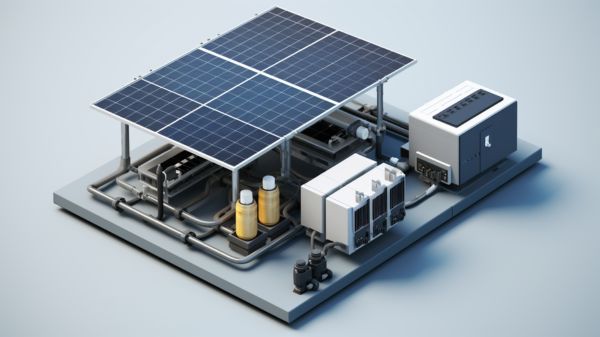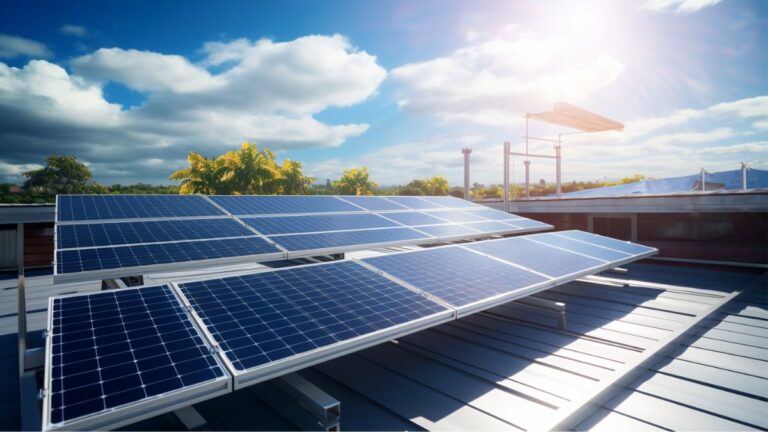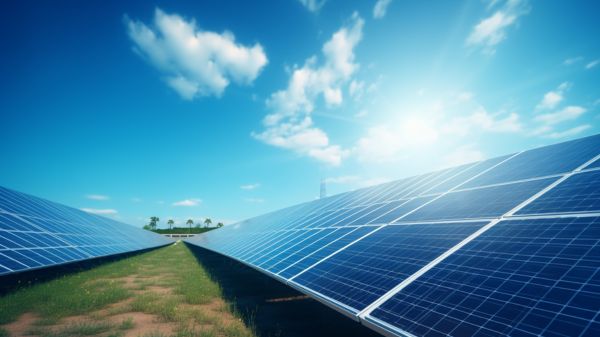Why Are Some Photovoltaic Cell Technologies More Efficient?
Are you curious about why some photovoltaic cell technologies outperform others?
In this article, we will explore the factors that contribute to the efficiency of various photovoltaic cell technologies. By examining the characteristics of monocrystalline silicon, polycrystalline silicon, thin-film technology, multijunction solar cells, and perovskite solar cells, we will uncover the key differences that make certain technologies more efficient than others.
Join us on this technical journey as we delve into the data and analysis behind these remarkable advancements in solar energy.
Key Takeaways
- Monocrystalline silicon photovoltaic cells have higher conversion rates and improved electrical performance.
- Polycrystalline silicon photovoltaic cells are more affordable but have slightly lower efficiency.
- Thin-film photovoltaic cells are lightweight and flexible but have lower conversion efficiency.
- Multijunction photovoltaic cells capture a broader spectrum of sunlight for higher efficiencies, particularly in concentrated photovoltaic cells.
- Perovskite solar cells have shown remarkable efficiency improvements but stability remains a challenge.
Monocrystalline Silicon
If you want to understand why monocrystalline silicon is a highly efficient photovoltaic cell technology, you need to delve into its unique properties.
Monocrystalline silicon solar cells are known for their exceptional efficiency when compared to other photovoltaic technologies. In terms of efficiency comparison, monocrystalline silicon solar cells have consistently shown higher conversion rates, typically ranging from 15% to 20%.
This can be attributed to the manufacturing process, which involves growing a single crystal structure from a high-purity silicon seed. This results in a uniform and defect-free crystal lattice, allowing for better electron flow and reduced energy loss.
The highly controlled manufacturing process ensures that the monocrystalline silicon solar cells have a more organized and efficient arrangement of atoms, leading to improved electrical performance and overall higher efficiency.
Polycrystalline Silicon
Now let’s delve into the efficiency of polycrystalline silicon, which, compared to monocrystalline silicon, offers a slightly lower conversion rate due to its different crystal structure.
Polycrystalline silicon, also known as multicrystalline silicon, is manufactured through a different process than monocrystalline silicon. Instead of growing a single crystal, polycrystalline silicon is made by melting raw silicon and then cooling it quickly, resulting in multiple small crystals forming.
This manufacturing process is less expensive and less time-consuming, making polycrystalline silicon more affordable than its monocrystalline counterpart. However, the presence of grain boundaries between the crystals can lead to reduced electron mobility and increased recombination, resulting in a slightly lower conversion efficiency compared to monocrystalline silicon.
Nonetheless, polycrystalline silicon still offers an excellent performance and is a popular choice for solar panel installations.
Thin-Film Technology
One option to consider for increased efficiency in photovoltaic cell technologies is utilizing thin-film technology.
Thin-film solar cells are made by depositing a thin layer of semiconductor material, such as amorphous silicon, cadmium telluride, or copper indium gallium selenide, onto a substrate.
This technology offers several advantages. First, it requires less raw material and energy during production compared to traditional crystalline silicon cells. Additionally, thin-film cells can be flexible and lightweight, allowing for more versatile installation options.
However, there are also some disadvantages to thin-film technology. One major drawback is its lower conversion efficiency compared to other types of solar cells. The thin layer of semiconductor material can also be susceptible to degradation over time.
Despite these challenges, ongoing research and development efforts aim to improve the efficiency and durability of thin-film solar cells, making them a promising option for future photovoltaic technologies.
Multijunction Solar Cells
To further increase efficiency, you can consider utilizing multijunction solar cells, which build upon the advantages of thin-film technology.
Multijunction solar cells are advanced photovoltaic devices that consist of multiple semiconductor layers stacked on top of each other. These cells are specifically designed to capture a broader spectrum of sunlight, resulting in higher energy conversion efficiencies.
One of the key benefits of multijunction solar cells is their ability to optimize the absorption of different wavelengths of light, allowing them to convert a larger portion of the solar spectrum into electricity. This is particularly useful in concentrated photovoltaic cells, where sunlight is focused onto a small area.
Additionally, multijunction solar cells can be combined in tandem configurations to further enhance their efficiency, making them a promising option for future solar energy systems.
Perovskite Solar Cells
To further increase efficiency, you can consider utilizing perovskite solar cells, which build upon the advantages of multijunction solar cells by incorporating a versatile and highly efficient material. Perovskite solar cells have gained significant attention in recent years due to their potential for high efficiency and low production costs.
Here are some key points to consider:
- Perovskite stability: One of the main challenges with perovskite solar cells is their stability. Researchers are actively working on improving the stability of perovskite materials to ensure their long-term performance.
- Efficiency improvements: Perovskite solar cells have shown remarkable efficiency improvements in a short span of time. Currently, the highest efficiency achieved by perovskite solar cells is over 25%, and further advancements are being made.
- Versatility: Perovskite solar cells can be easily fabricated on various substrates, including flexible ones, making them suitable for a wide range of applications.
- Tandem configurations: Perovskite solar cells can be combined with other types of solar cells in tandem configurations to achieve even higher efficiencies.
- Manufacturing scalability: Perovskite solar cells have the potential for large-scale manufacturing due to their compatibility with existing manufacturing processes.
Conclusion
In the world of photovoltaic cell technologies, efficiency is a key factor. Monocrystalline silicon, polycrystalline silicon, thin-film technology, multijunction solar cells, and perovskite solar cells all offer varying levels of efficiency.
Just like a well-oiled machine, these technologies work diligently to convert sunlight into electricity, maximizing energy output. Each technology is akin to a finely tuned engine, harnessing the power of the sun to propel us towards a cleaner and more sustainable future.






